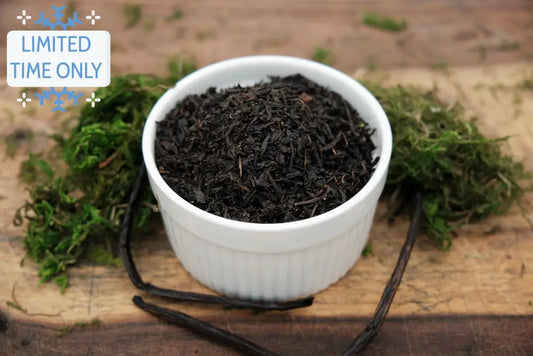Carro de la compra
Té de hojas sueltas Earl Grey London Fog de Indie's
Precio regular
De $7.00 USD
Precio de venta
De $7.00 USD
Precio regular
Precio unitario
/
por
Té de hojas sueltas con especias navideñas de Cinna
Precio regular
De $7.00 USD
Precio de venta
De $7.00 USD
Precio regular
Precio unitario
/
por
Té de hojas sueltas con cítricos ahumados de Glinda
Precio regular
De $7.00 USD
Precio de venta
De $7.00 USD
Precio regular
Precio unitario
/
por
Té de hojas sueltas de hierbas Sleepytime de Amani
Precio regular
De $7.00 USD
Precio de venta
De $7.00 USD
Precio regular
Precio unitario
/
por
Té de hojas sueltas de hierbas con jengibre y limón de Rhys
Precio regular
De $7.00 USD
Precio de venta
De $7.00 USD
Precio regular
Precio unitario
/
por
Té de hojas sueltas en barril de bourbon de Preston
Precio regular
De $7.00 USD
Precio de venta
De $7.00 USD
Precio regular
Precio unitario
/
por
Té de hojas sueltas de menta y cacao de Belle
Precio regular
De $7.00 USD
Precio de venta
De $7.00 USD
Precio regular
Precio unitario
/
por
Té verde de hojas sueltas con sabor a frutos secos y flores de Nalin
Precio regular
De $7.00 USD
Precio de venta
De $7.00 USD
Precio regular
Precio unitario
/
por
Té negro de hojas sueltas de vainilla de Nilla
Precio regular
De $7.00 USD
Precio de venta
De $7.00 USD
Precio regular
Precio unitario
/
por
Fiesta del té navideña - Set de regalo de té de hojas sueltas
Precio regular
$30.00 USD
Precio de venta
$30.00 USD
Precio regular
Precio unitario
/
por
Ya casi llegamos, agrega $75.00 USD más para obtener ENVÍO GRATIS
Ahora eres elegible ENVÍO GRATIS
Descuento aplicado
$0.00 USD
Total parcial
$0.00 USD




















